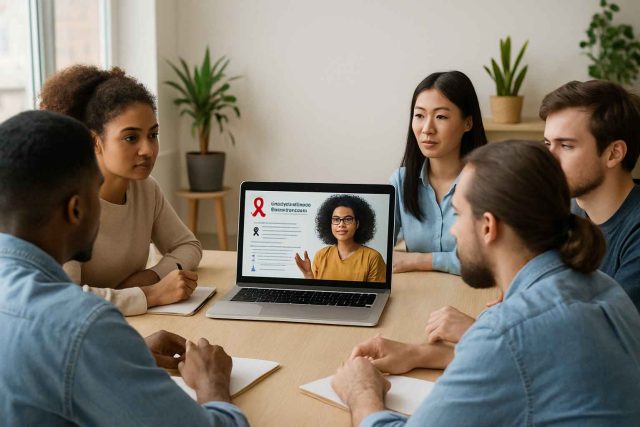Imagine trying to navigate a maze while blindfolded—that’s what seeking reliable HIV information felt like for many people two decades ago. Today, however, the landscape of Aids Education is changing rapidly, transforming confusion into clarity. With cutting-edge technology, evolving public health strategies, and increased global collaboration, education around HIV/AIDS is more effective and inclusive than ever before.
This article explores how Aids Education is evolving, the tools and trends shaping its future, and how these changes are making a measurable difference worldwide.
Table of Contents
- The Evolution of Aids Education Over Time
- Digital Innovations and Social Media Impact
- Addressing Stigma Through Inclusive Curricula
- Medication Awareness and Preventive Education
- Conclusion and Key Takeaways
- FAQs
The Evolution of Aids Education Over Time
Aids Education has made substantial progress since the early 1980s, when fear and misinformation often dominated public discourse. At that time, resources were limited, and stigma was high. While pamphlets and public service announcements were the norm, they often lacked inclusivity and scientific accuracy.
Over the years, educational programs have matured, incorporating evidence-based messaging and culturally competent materials. Today’s initiatives are led by both governmental bodies and nonprofit organizations, with support from healthcare institutions and educators. Moreover, there’s been a strategic shift from reactive to proactive education. Instead of waiting for crises, modern Aids Education focuses on prevention, outreach, and ongoing support.
Comprehensive sex education programs now often include HIV prevention strategies, including condom use and PrEP (Pre-Exposure Prophylaxis), such as Truvada and Descovy. These drugs are now common elements in many curricula, showing how education and medical innovation go hand-in-hand.
Digital Innovations and Social Media Impact
Technology has radically changed the way we deliver health education, and Aids Education is no exception. The rise of e-learning platforms, mobile apps, and interactive tools allows information to reach more people in more engaging ways. Whether through gamified learning, chatbot counseling, or YouTube channels with HIV-positive influencers, digital outreach plays a crucial role.
Social media campaigns—especially those on TikTok, Instagram, and Twitter—have successfully targeted younger audiences. These platforms foster peer-to-peer learning and create safe spaces for discussions around HIV testing, transmission, and treatment. For example, hashtags like #UequalsU and #KnowYourStatus have helped normalize HIV discussions and challenge outdated narratives.
Additionally, global events like World AIDS Day are now digitally amplified, gaining far more reach than in previous decades. Mobile health (mHealth) services also offer discreet HIV education and testing reminders, particularly valuable for people in remote or underserved areas.
Addressing Stigma Through Inclusive Curricula
Despite technological progress, stigma remains one of the biggest barriers to effective Aids Education. Many individuals still hesitate to seek information or testing due to fear of judgment. Inclusive education that reflects diverse communities—LGBTQ+, BIPOC, youth, and older adults—is crucial for breaking down these barriers.
Modern programs are focusing more on human-centered stories and real-life scenarios. This approach allows learners to emotionally connect with the material, which significantly enhances retention and empathy. Furthermore, there’s a growing effort to include testimonials from people living with HIV, offering both authenticity and inspiration.
Schools and community centers are increasingly adopting trauma-informed teaching strategies to foster safe learning environments. Policies supporting anti-discrimination and confidentiality further enhance the efficacy of these educational efforts.
For those needing confidential advice, resources like Healthcare.pro provide private consultations with qualified professionals.
Medication Awareness and Preventive Education
Another transformative element in modern Aids Education is the emphasis on medical literacy. Understanding HIV doesn’t stop at how it’s transmitted; it now includes how it’s treated and even prevented. Awareness of antiretroviral therapy (ART), including drugs like Biktarvy, Genvoya, and Tivicay, empowers individuals to make informed choices.
Programs now highlight how early treatment can suppress viral loads, making the virus undetectable and therefore untransmittable (U=U). This message, endorsed by the CDC and WHO, has become a cornerstone of recent education efforts.
Moreover, initiatives that promote regular testing and linkage to care are becoming the norm. Community health workers often collaborate with educational platforms to ensure that individuals are not only tested but also supported through follow-up care.
For additional details about ART, see resources at Health.healingwell.com.
Conclusion and Key Takeaways
Aids Education has evolved dramatically—from static brochures to interactive, stigma-free, and medically accurate platforms. These advances are not only reshaping how people learn about HIV but also how they live with and manage it. By embracing digital tools, inclusive narratives, and medical literacy, we are closing the knowledge gap and fostering a more informed society.
The journey is far from over, but with every new lesson and every empowered individual, we move closer to a world where HIV is no longer misunderstood or feared.
FAQs
What is the most effective way to deliver Aids Education today?
Digital platforms and inclusive, community-led programs are proving to be the most effective. These tools offer accessibility and personalization that traditional methods lacked.
How does PrEP fit into Aids Education?
PrEP is a vital part of preventive education. Medications like Truvada and Descovy are discussed in programs that focus on reducing HIV transmission risk.
Why is addressing stigma so important in Aids Education?
Stigma discourages people from seeking testing, treatment, and information. Reducing stigma through inclusive education ensures broader participation and impact.
Can HIV be prevented through education alone?
Education alone isn’t enough, but it’s foundational. It must be paired with access to healthcare, preventive medications, and community support.
Where can I get confidential help or more information?
Visit Healthcare.pro for confidential consultations and support regarding HIV testing, treatment, and counseling.
Disclaimer:
This content is not medical advice. For any health issues, always consult a healthcare professional. In an emergency, call 911 or your local emergency services.
